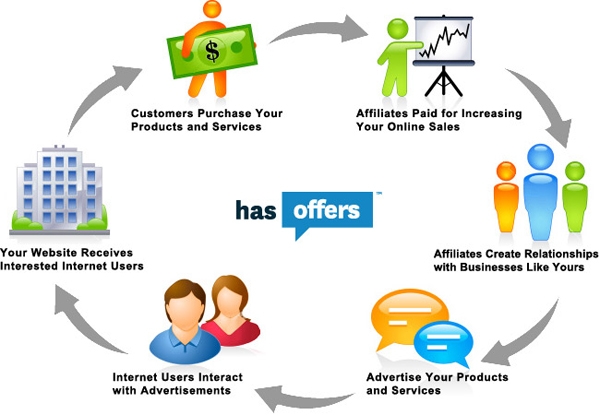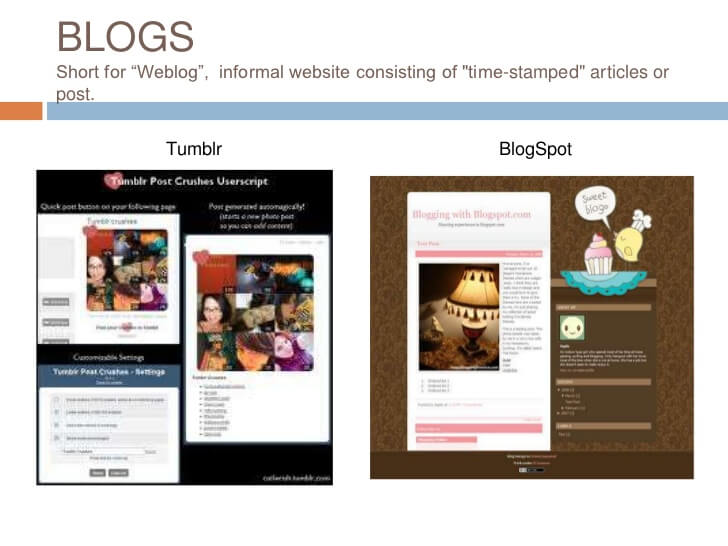Affiliate marketers help retailers sell more products by creating content online that attracts buyers and sends those buyers to the retailer to make a purchase. “Content” may include website articles, blog posts, or videos. Embedded in the content or on the same page as the content are special links (affiliate link) that lead to the retailer’s website.
In exchange, the retailer pays the affiliate a commission for each sale that resulted from a buyer clicking one of the affiliate links in the content. The terms of the agreement between the affiliate and the retailer vary by retailer.
Affiliates apply to an affiliate network or program and, upon approval, receive a unique tracking ID and access to the special links and images they can use on their sites and in their online content.
In order to receive credit for any sale, the affiliate must send the buyer to the retailer’s site using a special link on their website or published content.
These special links are called “affiliate links”. They contain the unique tracking ID that tells the retailer which affiliate should get credit for the sale.
When a site visitor clicks on an affiliate link on your website or in your content, a cookie is placed on the visitor’s computer. A cookie is a small bit of code that gets stored in a browser (Firefox, Chrome, and Internet Explorer, for example). That cookie tracks information such as the affiliate tracking ID, the date the link was clicked, and the time the link was clicked.
The terms of the affiliate program define how long the cookie lasts. For Amazon, the cookie period is 24 hours. As long as someone buys something within 24 hours of clicking an affiliate link on your website or published content and the cookie is still on the buyer’s computer then you receive credit for that sale.
When you sign up to become an affiliate you agree to a set of terms or rules outlined by the retailer. It is your job to make sure you read and understand those terms.
If you take your work seriously you will not skip this step. I’ve read stories of people who have lost their affiliate account – and any earned and unpaid commissions – because they did something in violation of the retailer’s terms.
You can avoid this happening to you by taking the time to read through the rules. It’s a small price to pay to insure your future income from the program.
If you have questions about any of the terms you should ask the Amazon Associates Help Desk directly. Never rely on another person’s interpretation of the terms. If the other person is wrong about something you could lose your account and your appeal to Amazon wouldn’t stand much chance of success.
Amazon’s Deceptively Low Commission Rate
Those who are new to affiliate marketing often question Amazon’s low commission rate. Can you really make “good money” earning just 4-8.5% on the sales amount? YES, you can!!!
I have a single website of about 100 posts that has averaged $4000/month in commissions. I know the potential of the Amazon Associates program.
I know their rate doesn’t look very appealing when compared to the 20% you can earn when promoting some smaller, boutique retailers such as you might find on ShareASale. A 24 hour cookie compared to the 30, 60, even 90 day cookies from other programs just makes things look even worse.
It all comes down to Amazon’s popularity with consumers.
Amazon doesn’t have to pay affiliates a rate similar to smaller retailers because they know that their affiliates will have a far easier time convincing someone to buy from them instead of a smaller, lesser known online store.
Think of it this way – suppose you have a very small front yard with a postage-stamp spot of grass and a very large backyard with two acres of lawn.
You want to hire someone to mow the grass so you talk to your neighbor’s landscaper and ask for a quote. He tells you he will mow the back yard for $75. You ask him how much to do the smaller front yard, too, and he says it’s another $75.
You’d question his pricing, wouldn’t you? Why should you pay the same amount for a small spot of grass that will take 10 minutes to mow as you would pay for the hour it might take to mow two acres?
Amazon knows that it takes less work to get someone to buy from them than it does to buy from their competitors. Plus, you’ll earn a commission on almost EVERYTHING else (there are some exclusions from their program) the consumer buys from Amazon at the same time even if it wasn’t an item you linked to in your content. Amazon is agreeing to pay you for work you haven’t even done – selling the other items someone might buy at the same time!
I’m an affiliate for multiple programs and in my experience it’s much easier to make more money from Amazon than it is from the programs of many of their competitors no matter what the terms.
Promoting products as an affiliate marketer is much like any other internet marketing cycle.
1. Find a keyword
2. Write content for that keyword
3. Publish the content online with your affiliate links embedded
4. Promote your content so that it can be found by your target audience
Sometimes that outline is described as the following instead:
1. Find a hungry niche of buyers
2. Publish content targeting those buyers
3. Send your visitors to an affiliate product that fills their need
4. Promote your content so it gets seen by your targeted audience
Those simple outlines look so easy, right? However, you’ve probably tried this before and it didn’t work. That’s because these simple outlines hide all the technical detail that goes into each step. Without those details you are really just taking a wild stab in the dark which significantly reduces your chances of success.
With a bit of research and planning ahead of time your chances of success increase greatly.







